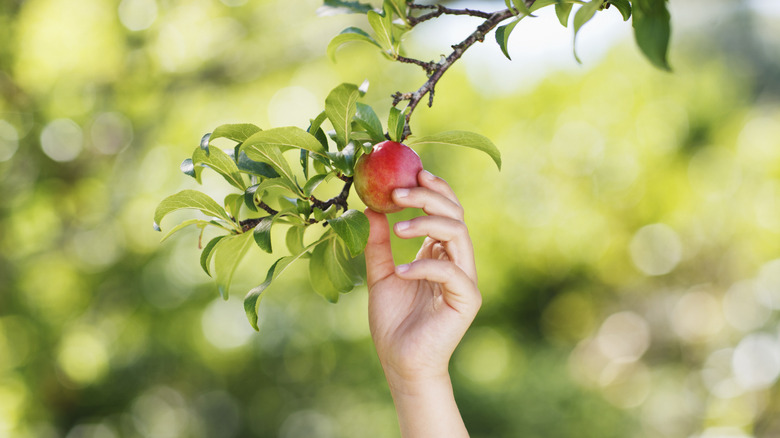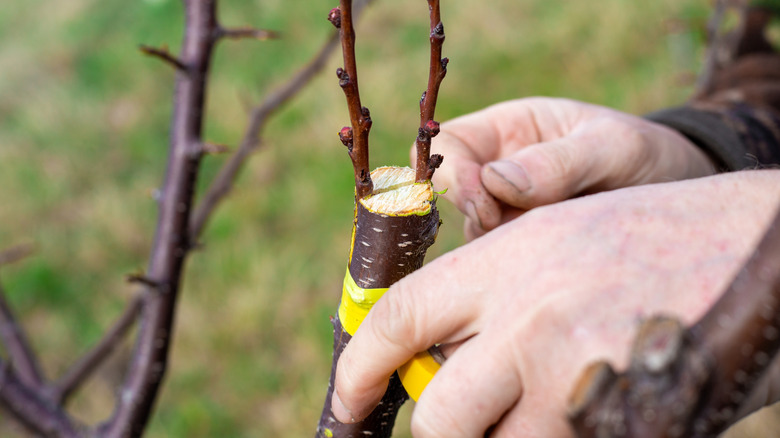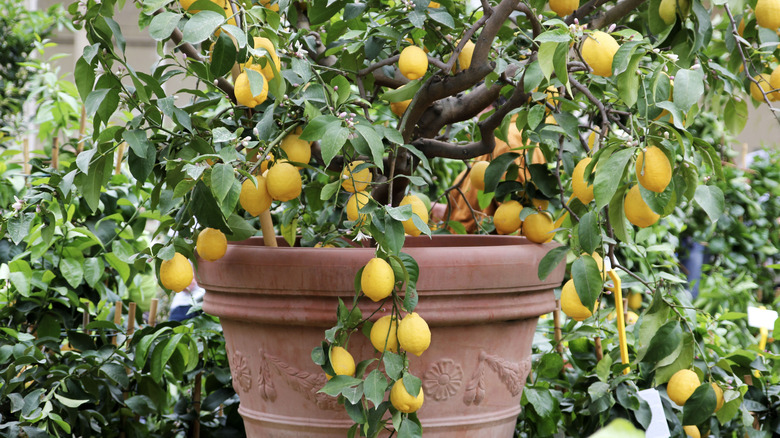Growing Fruit Trees From Seed Is More Complicated Than You Think. Here's Why
Most fruits have seeds of some kind. However, while it makes sense that planting the seeds of fruits that grow on trees would produce fruit trees, it's not quite that straightforward. For reasons connected to the genetics of fruit-bearing trees, the process of growing fruit trees from seed is more complicated than you might think.
Seeds in fruits contain genetic material from the parent tree they came from, but many fruit trees, like apples and pears, rely on cross-pollination for genetic diversity. Cross-pollination, or pollen shared from more than one variety of the same plant, can happen via birds, insects, the wind, or sometimes by human hands. This means the formation of apple seeds blends genetic material from two trees, and this combination is transferred to the resulting fruit.
So when you plant an apple seed, the tree's fruit will have some characteristics of the parent tree, but also some from a neighboring tree. This means an apple from a 'Granny Smith' apple tree won't give you seeds that produce a 'Granny Smith' apple, and the same goes for a 'Bartlett' pear. While some happy accidents occur in nature and produce trees with desirable fruit (the 'Granny Smith' apple was one such tree, discovered in New Zealand), many wild apple or pear trees don't produce fruit that is big, uniformly shaped, or tasty enough for commercial sale. So professional fruit growers use various techniques, including grafting, to produce large quantities of the same fruit.
Why grafting is often used instead of growing from seed
Most commercial apples are grown using grafting — a practice used to produce specific varieties of fruit. Since every new apple tree that grows from a seed is a combination of two different parent trees growing in proximity to each other, there are so many thousands of named apples out there. Some were discovered growing wild, while some of them were intentionally bred to combine characteristics of two apples. Some older heirloom fruits are no longer grown or even remembered.
But some heirloom varieties have made a real comeback in recent years. Their hardiness and excellent flavor make heirloom apples some of the best fruit trees to grow, and this is made possible by grafting. Apple trees sold for orchards and home growers have branches (called scions) of the desired apple variety grafted onto rootstock (often a hardy variety that is disease resistant, like a flowering crabapple). This same process is also performed for pear trees, which have similar genetic characteristics as apples. Fun fact: both are known as pome fruits.
Grafting is a fairly straightforward process, but it takes some practice to perfect it. There are several different grafting methods, each requiring specific tools and materials, such as a grafting knife and grafting tape. Grafting should generally be done in spring before active growth starts and before blossoms start to form, but it can be done in summer using slightly altered techniques.
Fruit trees that can be grown from seed
While the process can sometimes be tricky and time-consuming, some fruit trees can be grown from seed. Stone fruits like peaches, nectarines, plums, and apricots can all be grown this way. So if you're prepared to follow some steps, you can grow a peach tree from seed. The main trick to getting any fruit tree to grow from seed is getting the seeds to germinate. For peaches, some people swear by the paper towel method to germinate peach seeds fast. Other tricks, such as separating the inner seed from the outer pit coating, also aid fruit seed germination.
Lemon trees can also be grown relatively easily from seed, indoors or outdoors (in the appropriate growing zone). But be warned, if you're growing a lemon tree from seed, it can take up to ten years or more for the tree to produce fruit. It can be a fun experiment, though, and in the meantime, you can purchase a more mature lemon tree from a nursery. For example, a small, cold-hardy 'Meyer' lemon tree can be grown in a container and overwintered indoors.
Speaking of overwintering, while peach and other stone fruit seeds need to be cold stratified before planting, seeds from tropical citrus fruits can be planted at any time. This includes oranges, limes, lemons, and grapefruits. Be sure that your oranges actually have seeds, since many eating oranges are tangerine hybrids that don't have seeds, like navel oranges (including 'Cara Cara'), minneolas, and clementines. So go for known seed-containing varieties like 'Valencia' or blood oranges.


